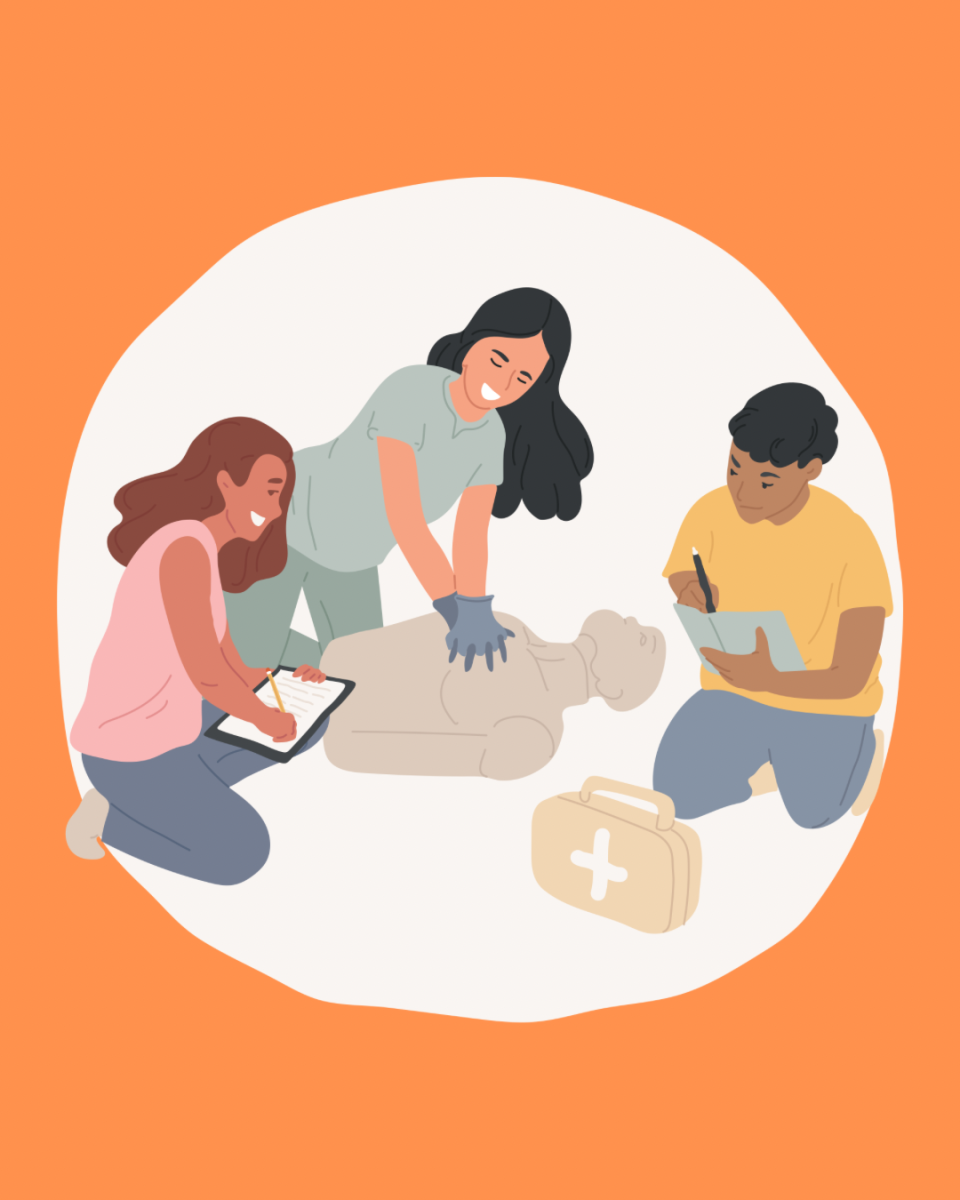GCSU has partnered with the American Red Cross to bring cardiopulmonary resuscitation, or CPR, training to the faculty at GCSU.
The course is taught by Marie Puckett, administrative manager for the wellness and recreation center at GCSU. She has been certified since 2015 in CPR and has taught many the proper ways to give aid to people during an emergency.
“Well, I started doing CPR training when I worked in a safety role for a manufacturing company,” Puckett said. “And so when I started here, I didn’t want to lose my instructor certification. So I asked if I could teach a couple of classes a year to keep my certification. And then it’s just kind of blossomed into providing it for campus.”
The first in-person session was on Thursday, Oct. 10 from 10 until 11 a.m. in the Pat Peterson Museum Education Room in Russell Library.
“So if somebody’s heart isn’t beating or isn’t beating effectively, you can do a series of chest compressions and rescue breaths to help circulate oxygen in the blood to help keep them alive until EMS show up,” Puckett said.
Before taking the hour-long in-person session, faculty had to take an online course through the American Red Cross.
This course consists of different modules to teach the student about CPR, first aid and automated external defibrillator, or AED. Then after the teaching module, it provides an interactive module for the student to practice it in a virtual setting. Participants are then required to take a test on each section.
After going through all the modules, people receive a certification of completion.
Faculty who signed up for the online training have to attend an in-person class to do the hands-on training. This hands-on training at GCSU consisted of people being taught how to do CPR, how to use an AED and how to administer naloxone (Narcan) in case of an overdose.
“We get out the mannequins, and we practice doing chest compressions and CPR,” Puckett said. “We go through the steps for both adults and children.”
Puckett also ensured that everyone understood the online course and allowed them to ask questions about the first aid section.
“I make sure that they know that you have to get consent from the person before you can help them,” Puckett said. “We talk about preventing disease transmission. If I’m doing a training for like a specific department or a specific area, the supervisor might ask me to go through a couple of the things that are specific directly to what they may come in contact with in their work on campus.”
At the end of the in-person session, faculty get a two-year certification. They can renew their certification at the end of the two years.
The school pays 50 dollars for the training certificates.
“And I think if you look on the website, like the Red Cross website, what other people are charging outside of Georgia College, it can range from like $80 up to $120 for that same thing,” Puckett said “And then some of them don’t include the in-person event. So we’re trying to keep it very reasonable for students to be able to do it.”
CPR is a life-saving measure that with proper application can save a life.
“The more people who know how to perform it [CPR], the more people who can act when they see someone who would require that [CPR],” said Christine Johary, a sophomore psychology major. “Like with Narcan, you might need to know how to administer that, but you could save a life that way.”
The next session is on Nov. 7 at 10 a.m. in the Pat Peterson Museum Education Room in Russell Library. It already has a waitlist, but Puckett plans on hosting a few sessions in the spring of 2025. Before you attend the in-person session you have to complete the online training.


